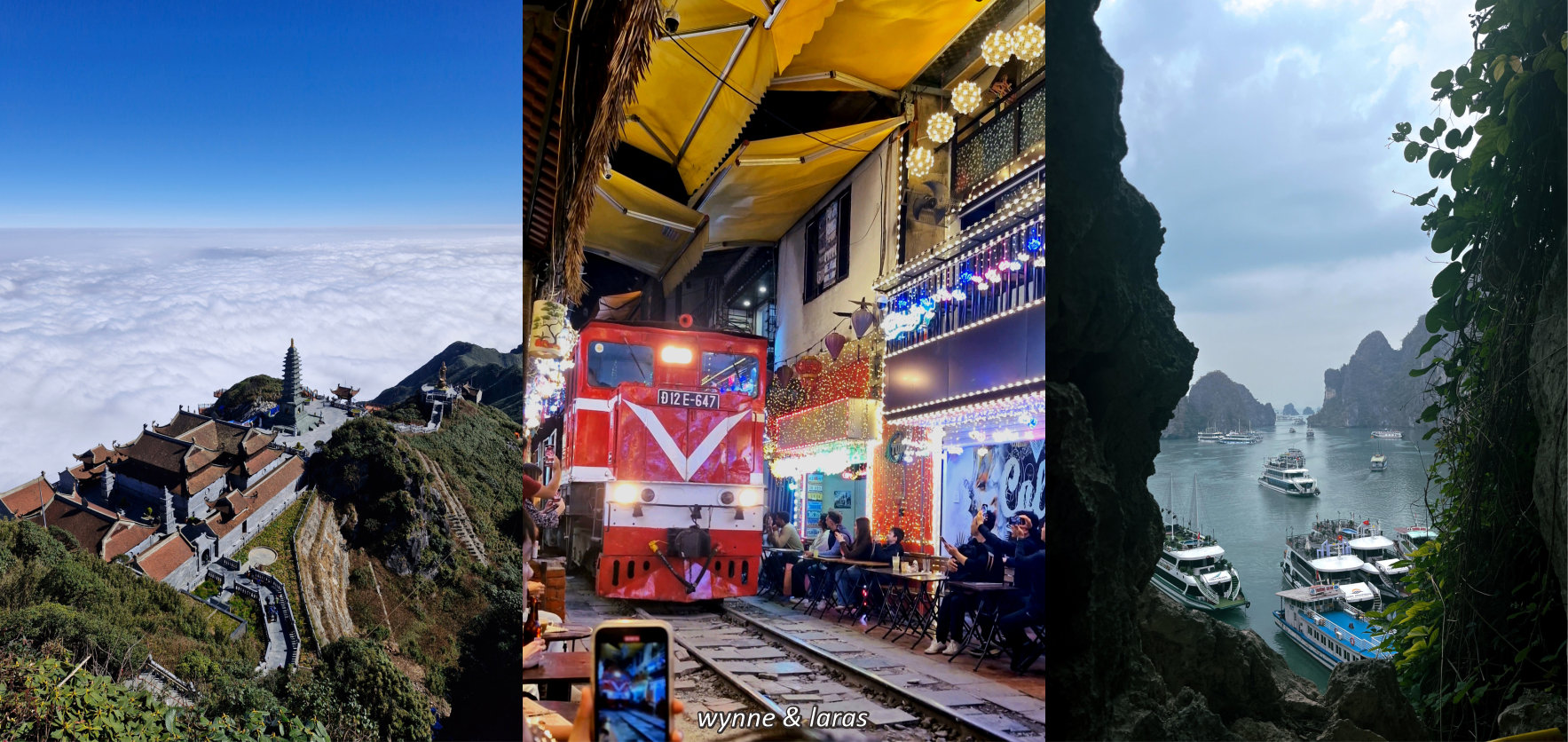
Sapa: Fansipan, Cat Cat, and Night Strolling around Sapa City Center
Sapa was Jose’s ‘main’ destination. She had a goal of seeing snow. While this wasn’t an entirely unrealistic target, for anyone with a similar vision, it’s worth noting that the chance of seeing snow at Fansipan, even in winter, is quite small. Though we saw on TikTok that there had been a slight snowfall three days earlier, we went there with the mindset that if we saw snow, great—if not, no big deal. Jose also wanted to experience the misty city atmosphere, often associated with ‘foreign countries.’ This is a common dream for those of us from tropical nations, even though Vietnam technically shares a similar climate with Indonesia and is also tropical.
Our first Vietnam adventure started under very clear blue skies at Fansipan, and although the city of Sapa was still somewhat foggy, it wasn’t nearly as foggy as we had imagined. Still, Fansipan was incredibly beautiful in the clear weather. I thoroughly enjoyed wandering around, climbing up and down the stairs to check out the temples there. The stone tower, or Grand Belfry, caught my eye first, though it didn’t quite register to me if we were allowed to get inside. As for the second ‘money shot’ scenic spot, I’d recommend gazing southeast from the Fansipan peak viewpoint area. From there, you can catch the view of a large temple complex (the Kim Son Bao Thang Temple), the pagoda, a small gate, and the Guanyin bronze statue, all set against the backdrop of the surrounding mountains and valleys, with clouds drifting below.
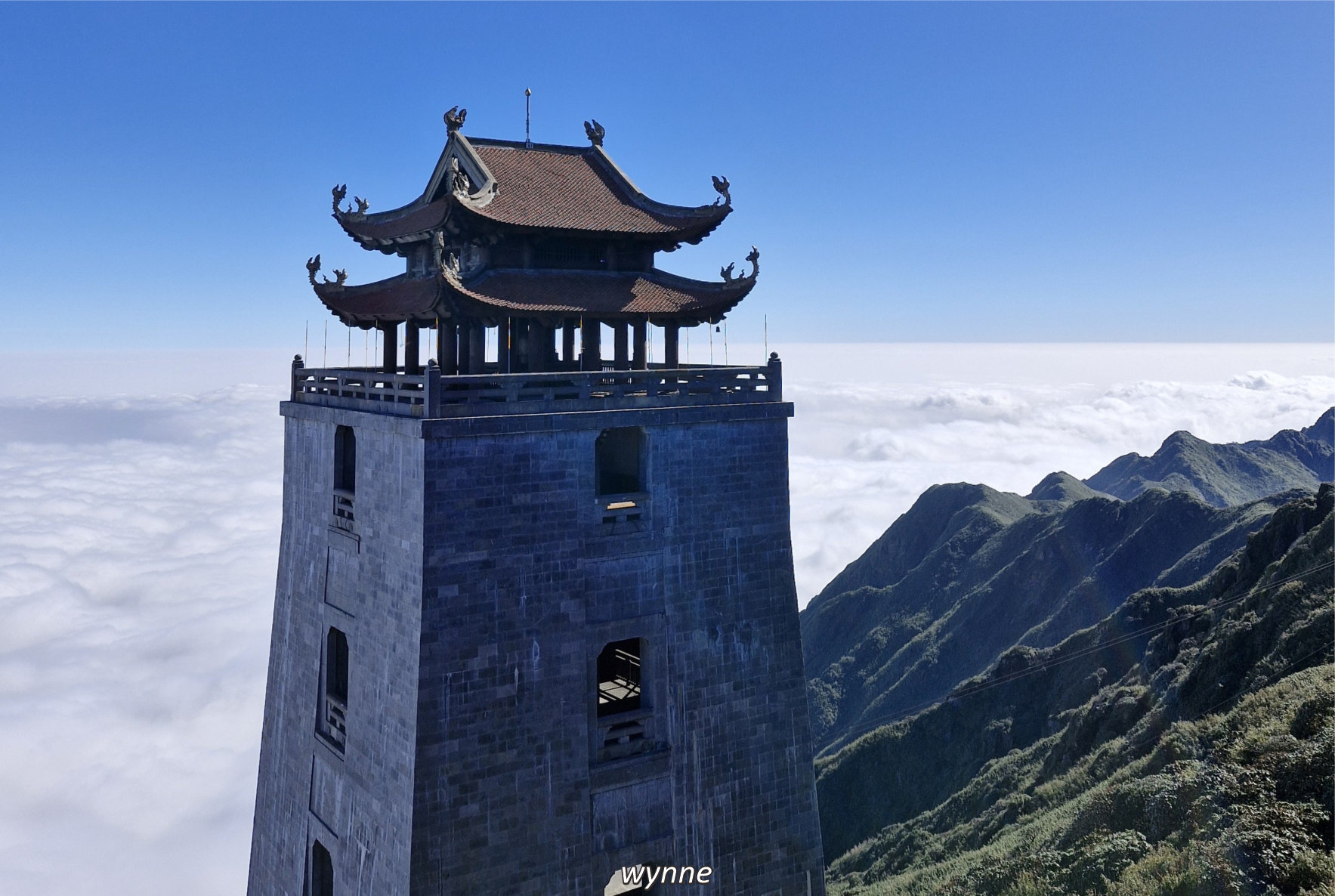
The contrast between the imposing stone structure and the traditional, multi-tiered wooden roof of the Grand Belfry caught my eye
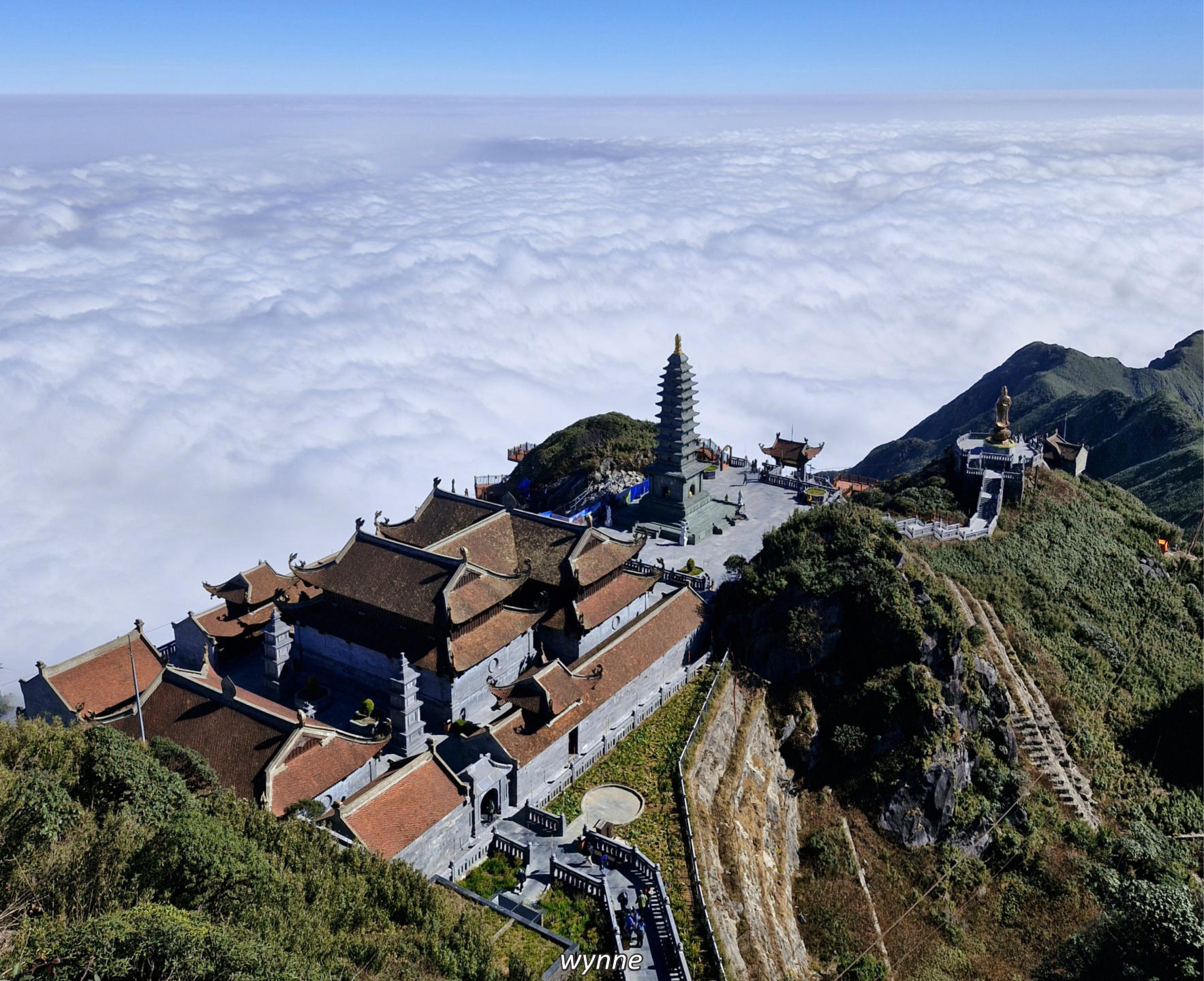
The view of Kim Son Bao Thang Temple from the Fansipan Peak viewpoint on a crisp, sunny day
It was also in Fansipan that I first realized how accessible tourism is in Vietnam. The country offers a wide range of transport options that are easy to book at various price points—from budget to luxury—and the facilities at tourist sites are excellent and well-organized. To reach the peak of Fansipan at 3,143 meters above sea level, the journey was very accessible, even for the elderly, as there’s a funicular available for those who don’t want to climb the stairs (with a ticket price of 150,000 VND one way).
As for Cat Cat Village, I honestly didn’t find it very memorable—not because of the place itself, but because both of my friends were quite tired after Fansipan. So, we decided to turn back halfway before reaching the main viewpoint with the traditional houses and waterfall backdrop. However, after showering and resting in the hotel room while enjoying the slightly foggy sunset mountain view, both Jose and Laras had regained their energy, and we were able to enjoy walking around Sapa city center, which felt much more alive at night.
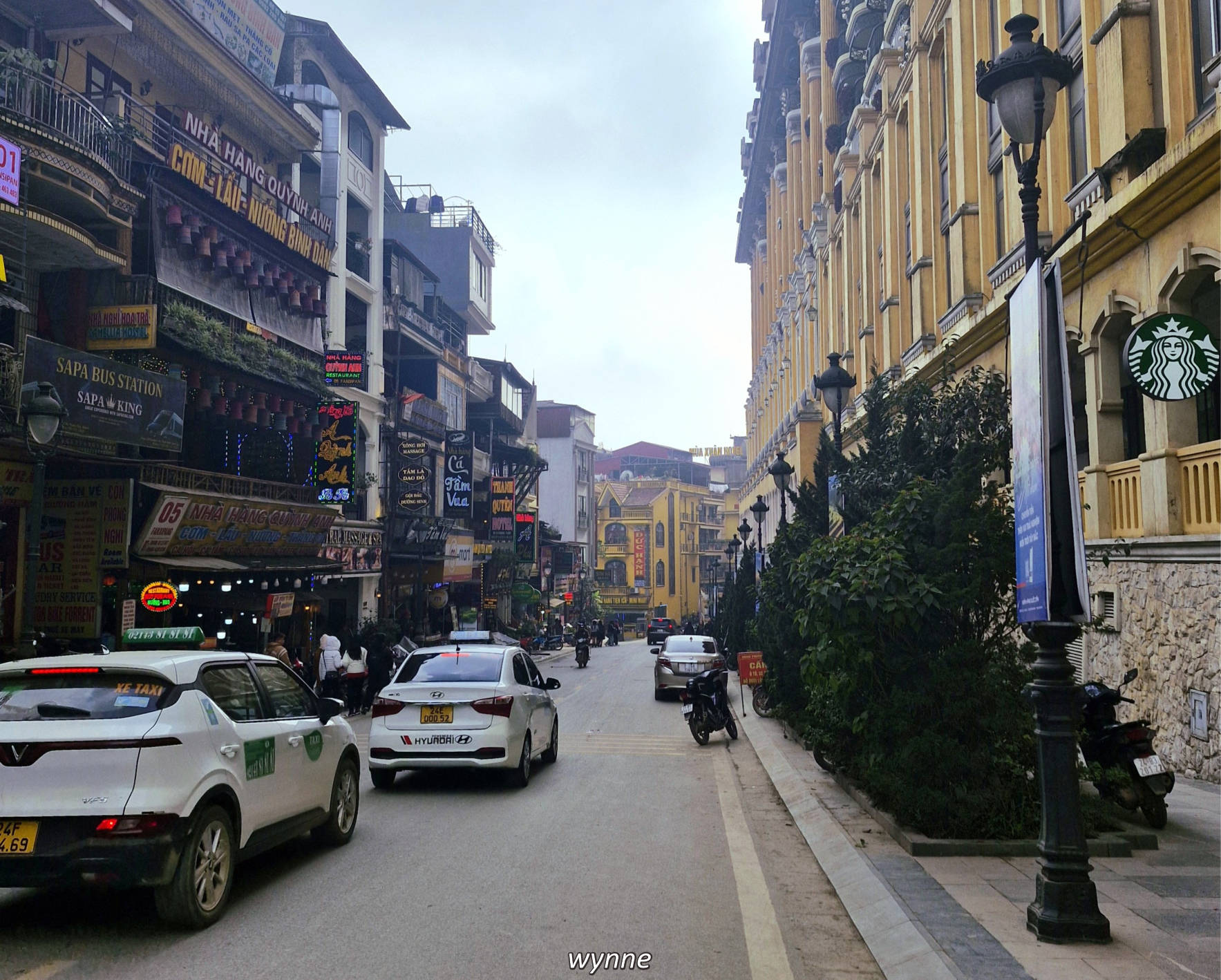
Sapa during the day—picture taken on the road in front of Sun Plaza
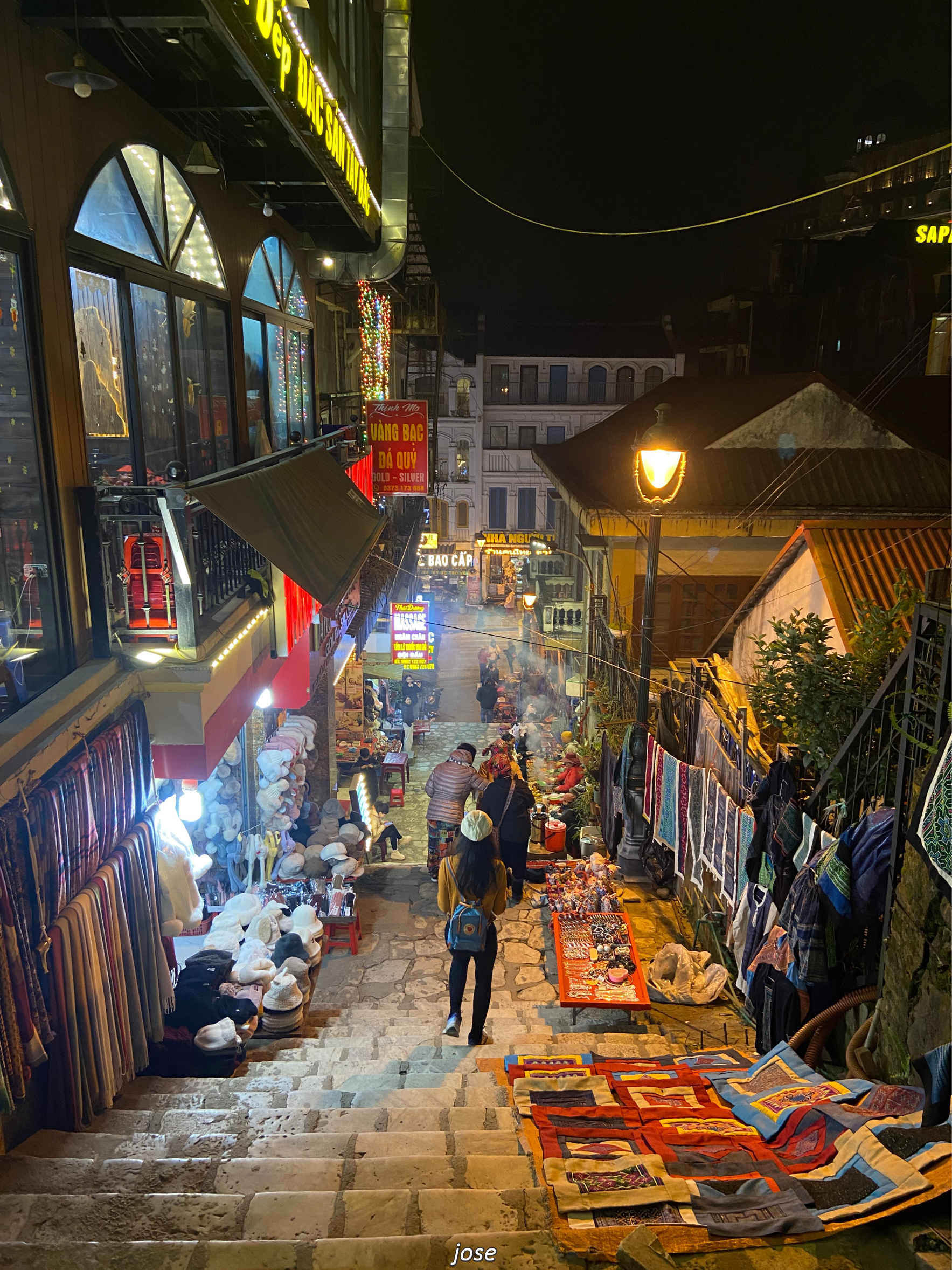
Sapa at night—picture taken at a small stairway passage
One of my favorite moments in Sapa was sitting on small chairs in front of a street food vendor, watching him grill the skewers of meat we ordered while warming ourselves by getting closer to the heat of the food. The vendor we chose was located on a steep street with stairs, which made the experience feel even more novel and memorable.
Hanoi: Falling in Love with Bun Cha, Salted Coffee, and the City Vibe
We stayed in Hanoi for two nights, choosing an Airbnb in the heart of the Old Quarter since we planned to do some city strolling without renting a motorbike. The moment we set foot in Hanoi, we were immediately excited to dive into the food scene. Armed with Google Maps, we walked through the bustling streets, immersed in the constant rhythm of car and motorbike horns as locals honked very liberally at every turn. Pro tip: When in Vietnam, if you hear honking, get out of the way. There’s no time to be mad or defend your position—just do as the locals do.
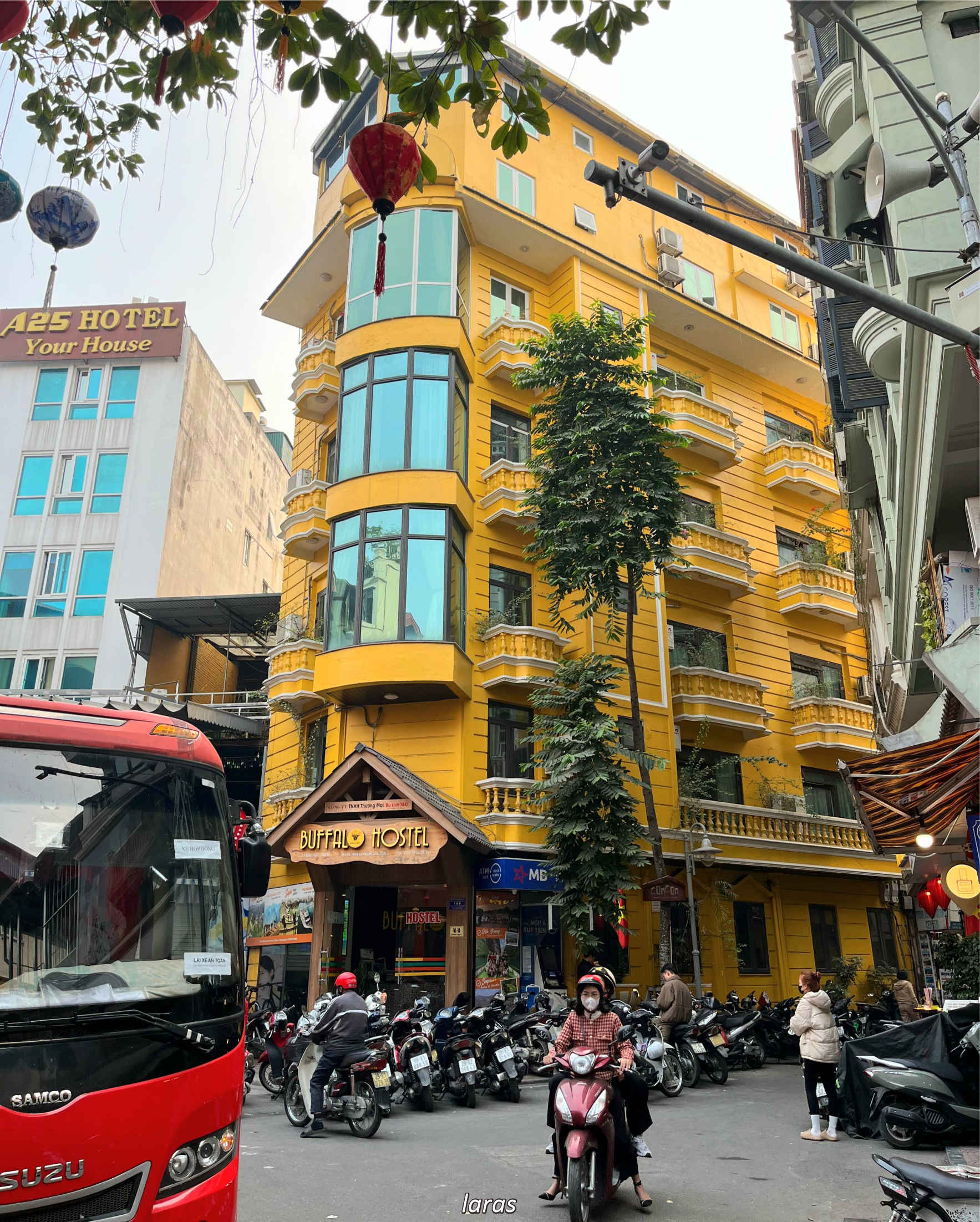
The view just across from Bun Cha Que Tre restaurant, in one corner of Hanoi's Old Quarter
Our first stop was Bun Cha Que Tre, which, according to Jose, is quite popular on TikTok. I don’t claim to be an expert on Vietnamese food, but I think it’s safe to say bun cha is always delicious, no matter where you have it. Maybe it’s because I find Vietnam's spices and flavors perfectly suited to my taste—but eating fried spring rolls and bun cha here was nothing short of heavenly.
With a full stomach, Laras led us to her chosen café, Giao Mua, which is also one of the top trending spots in Hanoi. From the outside, the café has a unique design that blends the whitewashed charm of Santorini with a hint of Spanish style. It also has a cozy, whimsical feel, almost like a hobbit hole—except this one stretches upward, not underground. There are three types of coffee to try when you're in Vietnam: salted, egg, and coconut. At Giao Mua, we tried the salted one. 10/10 would buy again.
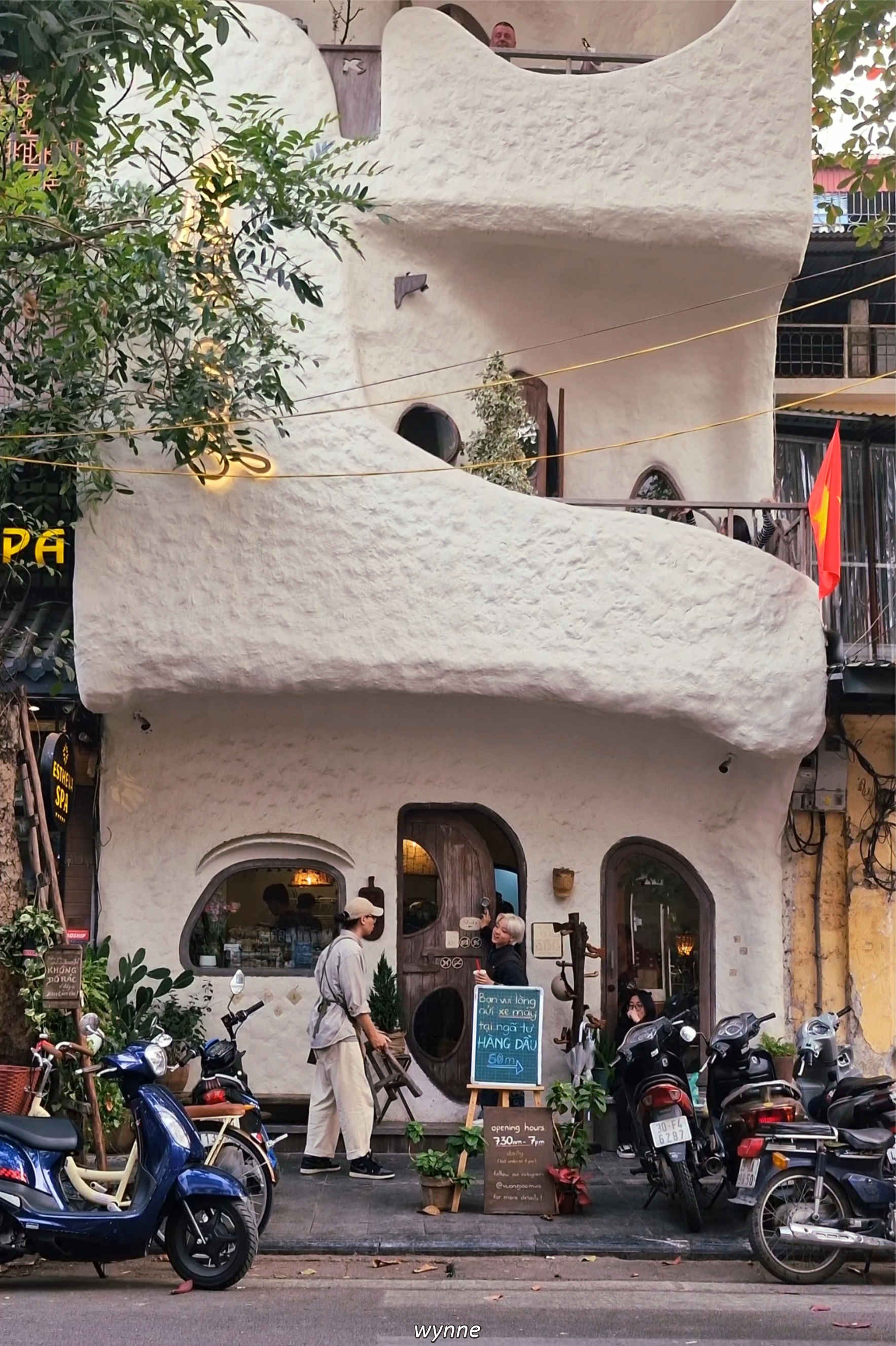
The Giao Mua cafe's distinct architectural style stands out against the surrounding buildings
To walk off our meal, we spent the evening strolling around the city, taking in sights like Turtle Tower and the Red Bridge leading to the Ngoc Son Temple as we circled Hoan Kiem Lake. We also visited St. Joseph’s Cathedral and the most beautiful Uniqlo building in Vietnam. We didn’t manage to dine at the Michelin-starred restaurant Tam Vi, but we got to experience ‘authentic’ Vietnamese food culture. We sat at small tables on the sidewalk, grilling our own meat while sipping on cheap bia (beer), huddling together around the tiny table.
Afterward, we made our way to the Southern (Le Duan) Train Street. It’s best to check the internet for train schedules, but be aware that they’re not always very precise, so it’s a good idea to arrive early. Once we secured our seats and ordered drinks—egg coffee and yogurt—it wasn’t long before the train passed by. We ‘successfully’ felt the thrill of it zooming past, barely a meter from where we were sitting, and managed to capture the moment on video.
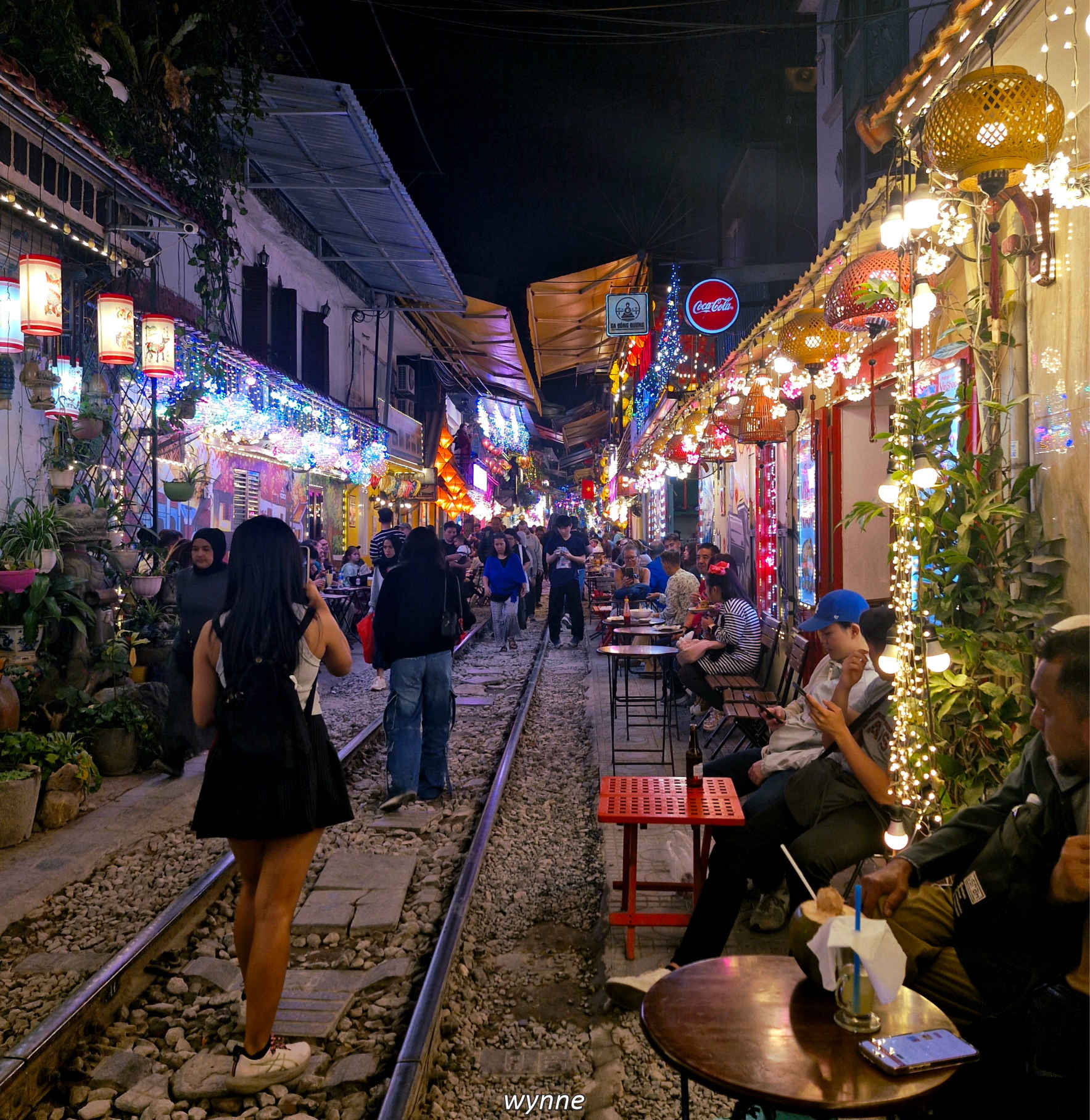
A vibrant and lively night at Le Duan Train Street
In Hanoi, I also succumbed to the temptation of shopping. Both of my friends had already scored good deals from one of the many street vendors selling clothes along the sidewalks, while I had been resolute about only buying coffee and postcards for friends and family back home. But then, Jose convinced us to check out a little artsy boutique called TiredCity. True to form, I’m a sucker for items featuring a “local artists’ original artwork” label. While the prices were a bit on the higher side, the artwork here was authentic, with details about the artists provided alongside each piece. There was a remarkable collection of artwork inspired by traditional Vietnamese prints, and I ended up buying a T-shirt featuring artwork by the young artist Xuan Lam—a remake of the iconic traditional Dong Ho folk painting, The Rat’s Wedding.
Ha Long Bay Cruise: Route 2 – Surprise Cave, Kayaking Through Luon Cave, & Ti Top Island
For Ha Long Bay, we booked a full-day tour package from Cozy Vietnam Travel, which included transport, a tour guide, lunch, and a full-day itinerary. Our guide, Minh, actually warned us the night before to wear warm clothes. But, like the self-deluded twenty-somethings we were, we stuck to our beach wardrobe plan—light, airy summer outfits. The temperature hovered around a cool 16 to 18 degrees Celsius, but the wind was absolutely unforgiving. Inside the cruise boat, it was warm and cozy, but every time we ventured onto the deck to snap photos, we could only last about five minutes before retreating.
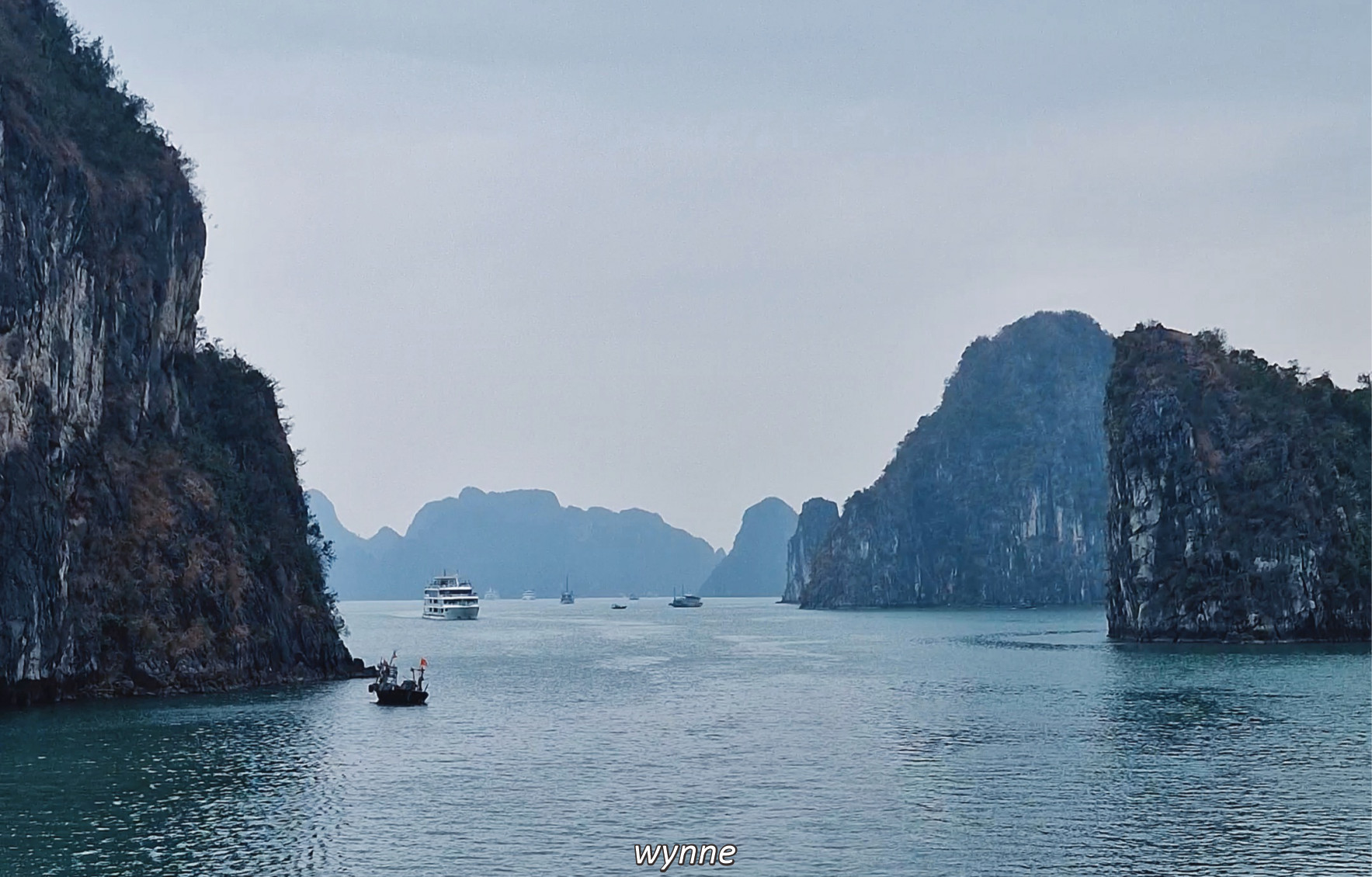
Even in less-than-stellar weather, taking a cruise in Ha Long Bay is worth it
Our first stop was the Surprise Cave, or Sung Sot Cave. Minh mentioned that this cave is one of the key reasons Ha Long Bay earned its UNESCO World Heritage Site status—at least, that’s what I remember. It’s certainly the largest and most impressive cave I’ve ever visited. Near the exit, we were given two photo options of ourselves, which we could later choose from to be printed as keychains for a free souvenir.
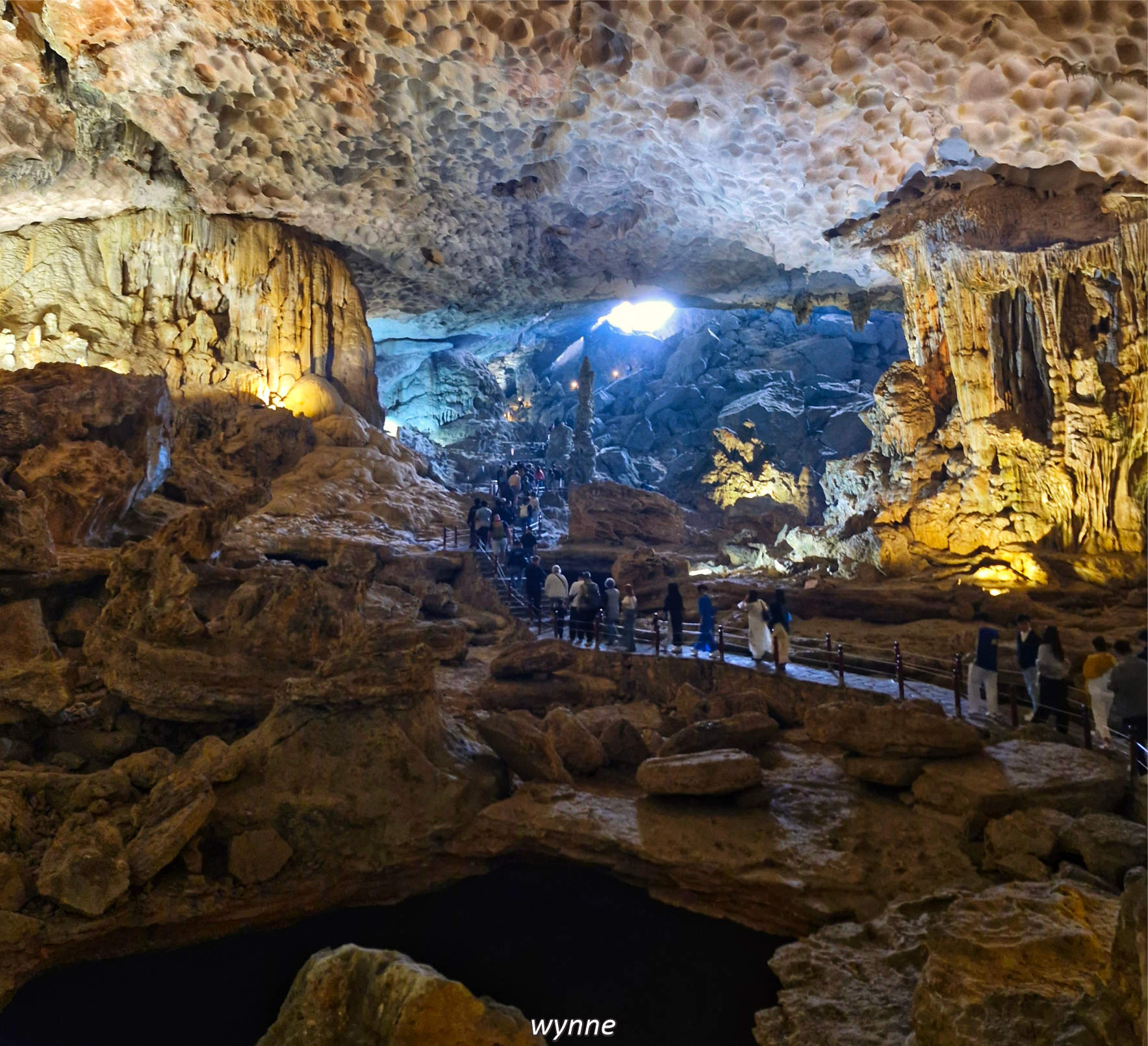
Exploring the interiors of Sung Sot Cave
Next on the itinerary was Luon Cave. You could choose between kayaking—where you paddle yourself—or a bamboo boat ride, where a local rower guides the boat, allowing you to sit back and take in the scenery. The route was straightforward: from the dock, you pass through Luon Cave, a tunnel-like passage, into a tranquil lagoon surrounded by towering limestone karsts. You circle the lagoon and return through the cave to the dock. Our tour allowed 30 minutes for this activity.
The final destination was Ti Top Island, where we also had 30 minutes to explore. You could hike to the top of the island via stairs for a panoramic view of Ha Long Bay. The hike was relatively easy, though crowded, and you might have to queue at certain points. Unlike Fansipan, I noticed some elderly visitors struggling with the stairs here. Laras and Jose also decided to stop halfway and head back to the beach, where you could swim, play in the sand, or watch people play beach volleyball. There were also food stalls and a bar for anyone in need of refreshments.
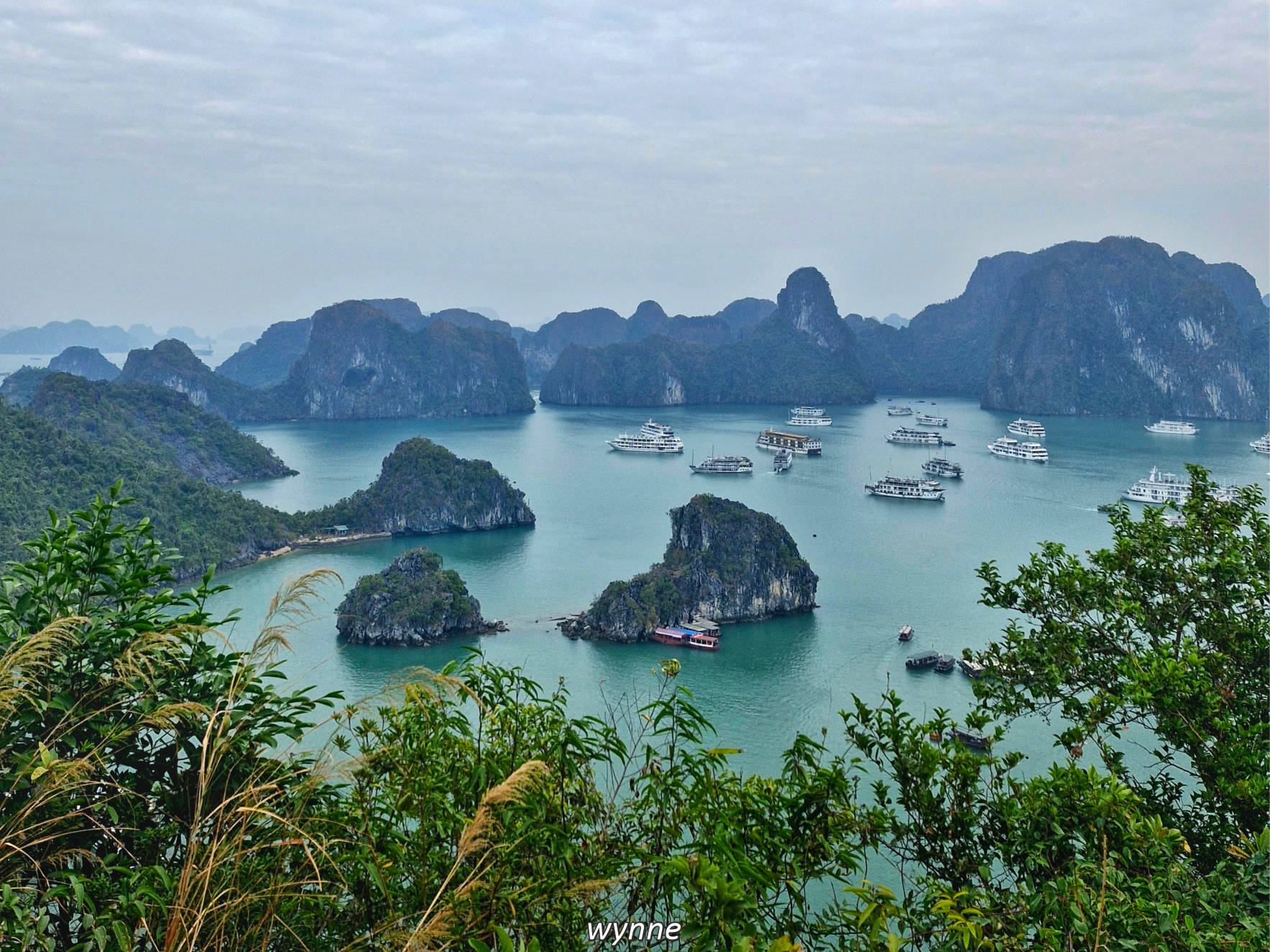
The view after climbing plenty of stairs to the top of Ti Top Island
I have to say, while the itinerary was exciting and Ha Long Bay's scenery breathtaking, what surprised me the most was the seafood buffet on the cruise. The giant boiled oysters were majestic—I couldn’t resist going back for seconds.
